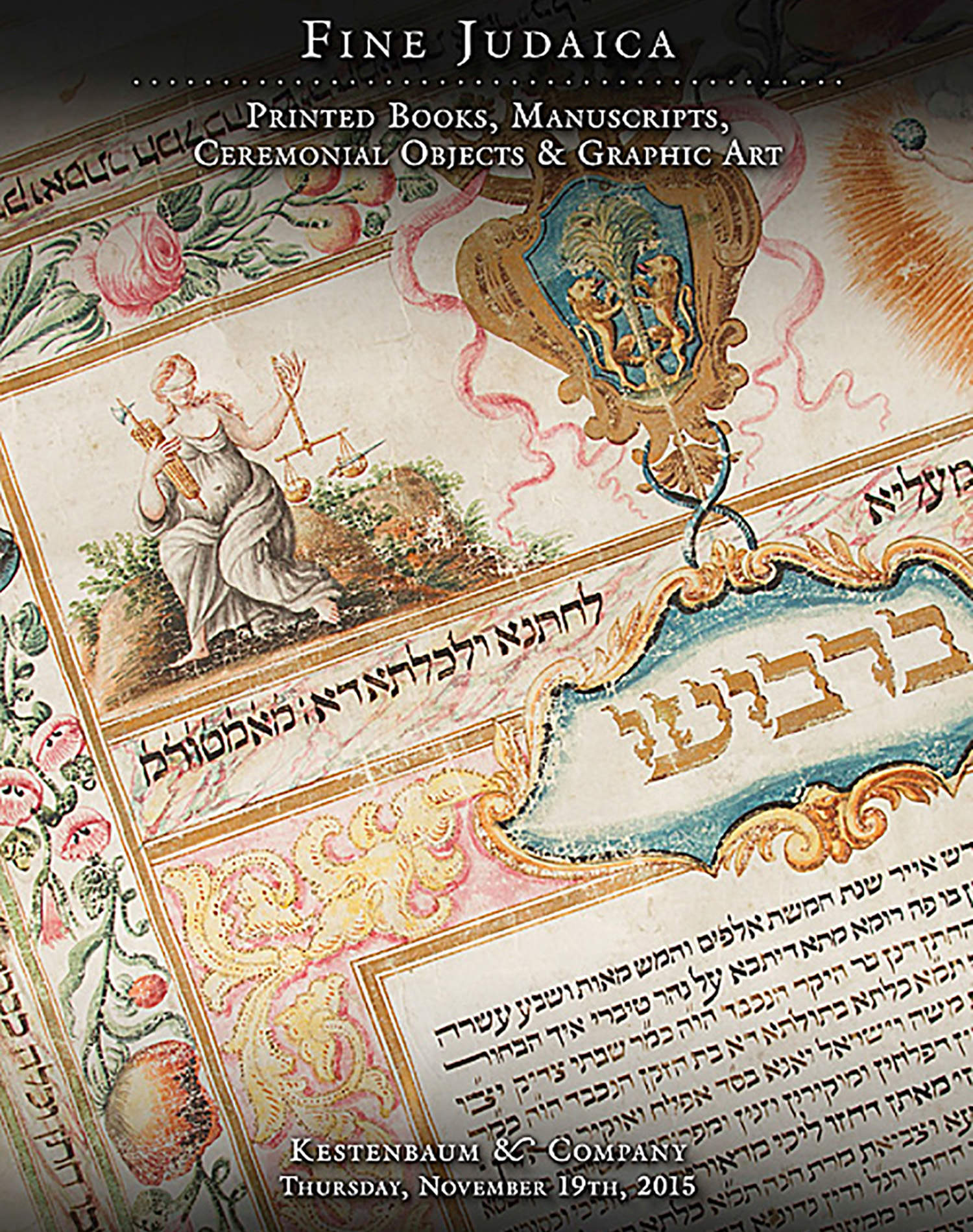(MEDIEVAL HEBREW FRAGMENTS)

AUCTION 66 |
Thursday, November 19th,
2015 at 1:00
Fine Judaica: Printed Books, Manuscripts, Ceremonial Objects and Graphic Art
Lot 105
(MEDIEVAL HEBREW FRAGMENTS)
Circa 1400
Est: $3,000 - $5,000
PRICE REALIZED $2,500
1. This Spanish manuscript has different and sometimes improved readings over the standard published version of the Talmud. For example, on f. 32a the standard edition concerning the “Asarah Malchioth” reads “Amar Rebbi keneged asarah hilulim,” yet manuscript reads “Amar R. Levi” as is the reading in Ein Ya’akov. The final words of the Tractate that appear in the manuscript differ from the standard version.
2. Contains different and sometimes improved readings over the standard published version of the Mishnah. For example, the Mishnah discusses the date as to when to commence the prayer for rain. Raban Gamliel states “Beshiva bo Teth Vav yom achar hachag.” The manuscript adds the clarifying word “Shehu Teth Vav yom achar hachag.” See Rashi and discussion in Tosfoth Yom Tov whether it might have been a different day. Furthermore, a more correct grammatical tense for certain passages exists in the manuscript. For example, reading “Hitchilu HaYechidim LeHithanoth,” rather than “Hitchilu HaYechidim Mithanin” as in the standard edition.
3. There are variant readings in the Targum from the contemporary published versio
